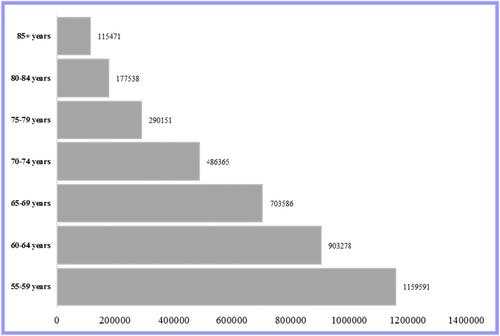This study describes the 2010–2019 trend of cervical cancer (CC) in women over 55 by socio-demographic index (SDI) and geographical regions.
We obtained data on CC annually from 2010 to 2019 from the 2019 Global Burden of Disease Study (GBD) to analyze the incidence, death and prevalence rates, and disability-adjusted life years (DALYs) associated with CC across different parameters such as global trend, age groups, SDI, continents, World Bank Regions, World Health Organization (WHO) regions, GBD regions, and National and territorial division. This analysis covers data from 204 countries and territories from 1990 to 2019.
There were 236,228 CC incidence cases worldwide in 2019, which is a 1.27-fold increase from 2010. Global CC deaths also increased to 169,304 cases in 2019, reflecting a 1.24-fold increase. CC prevalence increased to 769,925 cases in 2019, representing a 1.4-fold rise. The number of CC DALYs globally increased to 3,835,979 cases in 2019, reflecting a 1.24-fold increase. Incidence, death, prevalence, and DALY numbers of CC increased across all age groups females in the 65–69 years age group experienced the highest increase. Middle SDI countries had the highest incidence, death, prevalence, and DALY numbers, while low SDI countries showed increasing trends. Asia exhibited the highest incidence, death, prevalence, and DALY numbers of CC. Upper middle-income countries had the highest incidence, death, prevalence, and DALY numbers, with the highest decreases in these rates except the prevalence rate. The Western Pacific Region showed the highest incidence, death, prevalence, and DALY numbers, with declining rate trends. The Republic of Kiribati showed the highest incidence, death, prevalence, and DALY numbers.
Based on the study results, it is clear that although the global trend of epidemiological indicators of CC is decreasing, the largest proportion of the decreasing trend is related to developing countries. But in regions of Africa and Asia that have a lower level of development, sometimes these indicators show upward trends, which shows the worsening of the problem in these regions and the need for serious policies and plans to implement comprehensive vaccination, screening, and promotion interventions. People's awareness is necessary in the field of better disease control.



